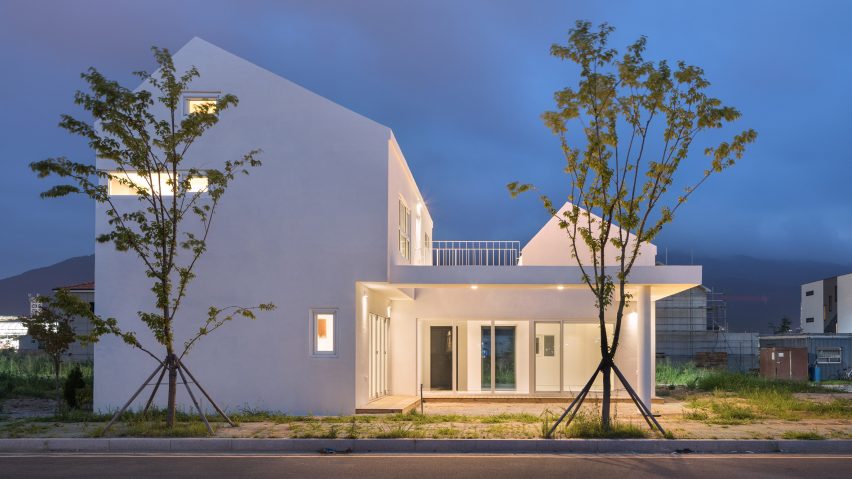Architecture studio Raum designed this house in the South Korean city of Yangsan as a cluster of clean-lined, interconnected blocks that can adapt to the changing needs of a young family.
South Korean studio Raum created the Yangsan Eorinjip property for a couple who wanted a home flexible enough to evolve as their child grows up.
Rooms within the house are separated into zones and are not designated specific functions, but rather can perform different roles at different times.
"The young house was built according to the existing circumstances, and this young house was designed to provide a basis for future growth," said the studio. "Eorinjip is the only home that can grow up as a child."
A gabled volume to one side of the entrance, for example, contains a simple double-height space that can be used as a living room, daycare room, study or guest room.
Another volume that projects out towards the street accommodates a garage on the ground floor that can also function as a workshop.
The master bedroom is situated on the upper floor of this block, which is distinguished from the rest of the house by its contrasting concrete exterior.
The concrete structure is enveloped on two sides by a surface formed of white louvres that create an enclosure with a gabled profile that echoes the solid volumes.
The louvred structure encloses a tree that will gradually grow up through a void, with its branches intertwining with the permeable surfaces.
At the rear of the house, a low wall encloses a courtyard garden flanked by sliding and folding glass doors that connect it with the kitchen and dining area.
The garden space is further defined by a narrow roof structure. Supported by a pillar in one corner, it traces the boundary of the plot.
"The yard is also an outdoor living room, a children's playing space, which is an extension of the inner life," said the architects.
"Eaves and fences exist between the sky and the ground, forming a part of it. And these eaves and fences create new areas of space."
A staircase beside the entrance leads up to a first-floor landing that can be used as an additional living space. This level also accommodates the master bedroom, second bedroom, washroom and utility room.
A bridge that traverses the gap between the house's two main volumes extends towards an open-air terrace, which is slotted in behind the asymmetric gabled walls above the living space below.
A second staircase with delicate treads that cantilever from the walls ascends to an additional bedroom squeezed into the attic space.
Photography is by Yoon Joonhwan.
Project credits:
Lead architect: Oh Sinwook
Partner architect : No Jeong-min
Design team: An Shin, Yu Seongcheol, Park Gyuhyun, Yoon Jeongock, Choi yunjeong ,Lim Ahyun, Kim Dayeong
Structural engineer: In Structure
Construction: concrete workshop.enc
Mechanical engineer: Sinheung
Electric and communication engineer: Youngsin

